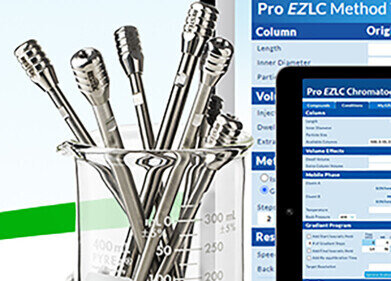Environmental Laboratory
New Version of GC/MS Method Package for Residual Pesticides in Foods
Apr 27 2012
To address the increasing demand to reliably check for critical amounts of residual pesticides in foods, feed additives and veterinary drugs Shimadzu (Japan) is releasing the company’s GC/MS Method Package Ver. 2 for Residual Pesticides in Foods.
The new analysis package has been developed to improve the speed and efficiency of using GC/MS technology to analyse as many as 800 different residual pesticides by providing simpler inspection methods and batch analysis of multiple component samples. The method package covers almost all pesticides that can be analysed by GC/MS technologies.
Shimadzu’s GC/MS Method Package Ver. 2 for Residual Pesticides in Foods has been exclusively tailored for use with Shimadzu’s GCMS-QP2010 series of instruments which include the high performance GCMS-QP2010 Ultra that is capable of rapidly pumping down to enable qualitative analysis within 10 to 15 minutes while achieving fast scan times of 20,000 amu/sec.
The new method package, which supports GCMS Solution Ver. 2.60, features a CD-ROM that contains method files which have been pre-registered with optimised analytical conditions, compound information, including retention indices, report format files, tuning files and an identification support tool. The package also includes an instruction manual and glass inserts (pack of 5).
The GC/MS identification support tool helps to overcome the influence of contamination of matrices in actual sample analysis or erroneous identification caused by retention time shift. The tool, which enables identification results to be displayed in order from components having the highest potential to exist, runs linked with GCMS Solution, enabling identification results to be carefully studied while viewing the chromatogram. Because the retention indices of all compounds are pre-registered, GCMS Solution's AART (Automatic Adjustment of Retention Time) function allows retention times to be easily corrected for easier and smoother analysis.
Digital Edition
IET 34.2 March 2024
April 2024
Gas Detection - Biogas batch fermentation system for laboratory use with automatic gas analysis in real time Water/Wastewater - Upcycling sensors for sustainable nature management - Prist...
View all digital editions
Events
May 03 2024 Seoul, South Korea
May 05 2024 Seville, Spain
May 06 2024 Minneapolis, MN, USA
May 13 2024 Munich, Germany
May 15 2024 Lund, Sweden


















